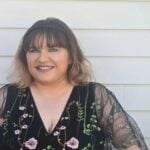Mmoja Ajabu was 19 when Dr. Martin Luther King Jr. was assassinated. He was in the military at the time, in training in Missouri. He and the other Black soldiers in his base were relegated to a remote part of the base and told they would be shot if they attempted to leave as the white soldiers went out to “quell the rebellion in St. Louis,” he said.
“I started understanding at that point what the hell was going on,” Ajabu said.
Now, over 50 years later, Ajabu sees little difference in the struggle for civil rights. Protests popped up all around the nation — including in Indianapolis — following the murder of George Floyd by Minneapolis police in May. While chants of Floyd’s name and “No justice, no peace” filled Monument Circle for several weeks, local activists will tell you the demonstrations weren’t just for Floyd. For many, the viral video of Floyd’s death was a painful reminder of deaths more close to home.
Dreasjon Reed. McHale Rose. Aaron Bailey. Michael Taylor.
These names — all Black men in Indianapolis who died either by police-action shootings or while in police custody — have been repeatedly brought up throughout the protests. Crowds calling for answers and justice for these men have been nonstop for months. From marches throughout downtown to early morning “No justice, no sleep” rallies outside the homes of Mayor Joe Hogsett and Indianapolis Metropolitan Police (IMPD) Chief Randal Taylor, those participating often remind one another that “this isn’t a moment, this is a movement.”
But, a movement needs leaders. Luckily, for the hordes of people who have been protesting, several young Indianapolis residents were more than willing to step up to the challenge.
NiSean Jones, 22, formed Black Out for Black Lives after she attended the first protest in Indianapolis following Floyd’s death. She said she didn’t want the demonstrations to be a “one-time thing,” and was inspired to organize events to continue to shed light on civil rights issues.
Jones isn’t surprised many local organizers are young adults. She knows what it’s like to grow up in the age of social media, where hate crimes and injustices frequently go viral.
“A lot of the people who come to the protests are around our age, like 18 to 30,” Jones said. “In our lives, we’ve witnessed horrific events that have happened between Black people and police, where George Zimmerman walked off scot-free [after killing Trayvon Martin], and those injustices we’re seeing are only magnified due to social media. … So, our generation knows what’s morally wrong, and we’re trying to change those things.”
‘The process is never beautiful’
Over the past several months in Indianapolis, demonstrators have been arrested, tear gassed and some beaten with batons just minutes past a curfew imposed by Hogsett.
Jones, who was tear gassed while demonstrating, said the experience taught her what she was fighting for.
“It was traumatizing,” Jones said. “To see people bloodied up, crying and on the verge of passing out because they can’t breath. … But I felt like that was something I needed to witness, because it was something my ancestors went through. It was beautiful to see people in my community come together, but the process was ugly. The process is never beautiful, but the outcome is what’s beautiful.”
In June, the American Civil Liberties Union (ACLU) of Indiana filed a lawsuit on behalf of Indy10 Black Lives Matter against IMPD for its use of tear gas on protesters.
Jessica Louise, an Indy10 representative, echoed Jones’ argument that exposure to tear gas is traumatic, and took issue with IMPD’s use of the chemical agent, especially in the midst of a pandemic which attacks the respiratory system.
IMPD officials claimed tear gas was used as a final resort after protesters began damaging the City-County Building on the evening of May 29. Protesters claim the damage done in the city that weekend occurred after IMPD deployed tear gas.
‘You cannot change a system’
While protests throughout the city are ongoing, Jones hopes the demonstrations and the conversations they start inspire those who feel passionately about social justice to invoke change in other ways.
“Protesting is not all we have to do,” Jones said. “You cannot change a system, you have to break it. To do that, you have to vote. You have to be active in your community.”
At many demonstrations, there are designated tents to get people registered to vote, and organizers, including Mat Davis, who formed the Indiana Racial Justice Alliance, frequently reminds crowds of the importance of their voice and their vote.
At a June 13 event at Monument Circle, Davis brought City-County Council President Vop Osili to speak to the group.
“The way that we’re able to fight, the way we’re able to make change in our city is when you are behind us,” Osili told the crowd. “When you say ‘Get it done’ and your voice is heard. … What we need is your voices to continue. … The only way that we will have true change, true transparency and the voices of our people is if you continue to speak, continue to shout and hold us accountable.”
‘Understand the enemy’
To truly make change and make one’s vote count, however, Ajabu believes one must know what they’re fighting against.
“You have to understand the enemy,” Ajabu said, “and the enemy that they are fighting is tyranny. Tyranny is defined as the government being able to do something that a citizen can’t, and not be held accountable for what they did.”
To help organizers and activists better understand tyranny, Ajabu recommends signing up for an online course, led by Dr. Lasana Kazembe of Indiana University, that focuses on the history of tyranny throughout the world.
“I’m saying to the youngsters that they got to understand the makings of tyranny,” Ajabu said. “As an OG, if I might use their language, I want to help. Become knowledgeable of what they’re fighting for. You can’t defeat an enemy of which you’re not knowledgeable.”
‘Taking the steps to get free’
Ajabu has been fighting for the same cause since 1969: freedom.
Before going to college in the 1970s and becoming a commander in a local chapter of the Black Panther Party in the 1990s, Ajabu began questioning race relations in the United States while serving the country in Vietnam.
“In January of ‘69, the Vietnamese had loud speakers on the perimeter of our base, and they were asking Black soldiers why would we fight them when the country we were fighting for was fighting us,” Ajabu said. “ … As a veteran who is a recipient of the second highest medal that the government gives a soldier — a Bronze star — I didn’t earn that medal to come back here and be treated like this. … We’re tired of limited acceptance. We want to be free, and we’re taking the steps to get free.”
As a leader in IUPUI’s Black Student Union (BSU) in the 70s, Ajabu was arrested for his activism. Today, IUPUI BSU president Sha-Nel Henderson is still advocating for Black students at IUPUI.
During a June 19 demonstration through the downtown campus, Henderson and other students were calling for reparations for the Black families displaced by the creation of IUPUI, courses looking critically at Black history and racism in Indianapolis, and a student center specifically for Black students.
As a group of roughly 45 IUPUI students marched through campus chanting “We’re the change,” it became evident that, in 50 years, not much has changed.
“Where IUPUI is built today, there once stood a strong Black community,” Aahron Whitehead, a member of the Indiana Racial Justice Alliance, said. “ … We want IUPUI to basically repay the community for their actions.”
‘Elicit a change’
While Jones doesn’t believe protesting is all that’s needed to bring about change, she knows it helps.
“In order to elicit a change, you have to talk about it,” Jones said. “Protests allow that.”
Through Black Out for Black Lives, Jones doesn’t just want to talk about police brutality. Systemic injustice, she says, goes much deeper than that.
“Every time I see a police officer behind me, my heart shouldn’t drop to my stomach,” Jones said. “I’m scared to have a baby. … Black women have the highest mortality rate when it comes to delivering a baby. I shouldn’t have to fear that.”
Jones went on to discuss discrimination in corporate America, the prison system and economic disparities that sometimes lead to an increased crime rate.
“I come from Haughville; I come from poverty,” Jones said. “I took one route, and a lot of people took a different one. I’ve seen friends who dealt [drugs] die due to the streets. We don’t talk about how traumatic it is to be Black and young in America.”
Jones wants to use her organization to educate Black children about the Black leaders they don’t learn about in school to let them know their options are limitless.
Her end goal is the same as Ajabu’s: not just limited acceptance for Black Americans, but freedom.
“America can’t exist without people of African descent,” Ajabu said. “… I would just like to say to the youngsters, don’t despair. It ain’t over. If we work together, we’ll eventually be free.”
Contact staff writer Breanna Cooper at 317-762-7848. Follow her on Twitter @BreannaNCooper.







